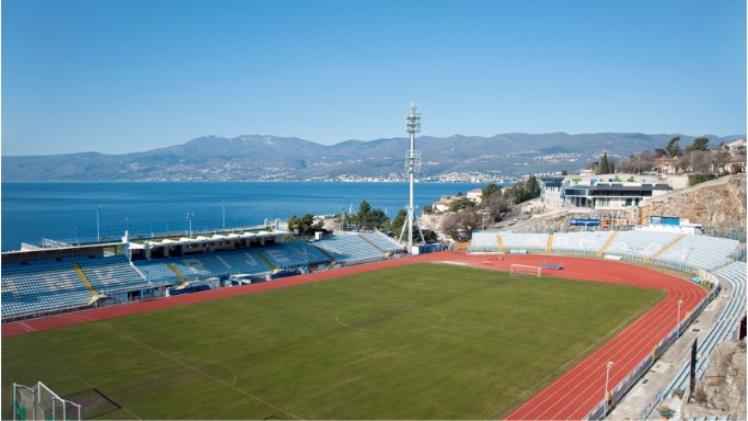Table of Contents
History and Construction of the Stadium
According to information found by RakhoiTV https://www.randidriscoll.com/ Kantrida Stadium is located in the Kantrida neighborhood of Rijeka, Croatia. It officially opened on June 1, 1913. Before becoming an internationally recognized football stadium, the site was a stone quarry, with a deep cliff to the north and the Adriatic Sea directly to the south, creating a truly unique and spectacular location.
Over the years, the stadium has been renovated several times, with major reconstructions in 1925, 1951, and 1958 to expand and improve its infrastructure and facilities. In recent years, there have been many plans for the renovation or new construction of Kantrida Stadium, with the goal of preserving its historic shape while bringing it up to modern standards.
Stadium Location and Capacity
Kantrida Stadium is located at Portić 3, in the Kantrida neighborhood in the western part of Rijeka. The site is special because of its natural landscape—with cliffs from the old quarry on one side and a view of the Adriatic Sea on the other. This location is not only beautiful but also symbolic, as it’s a part of Rijeka’s urban history.
Capacity & Technical Specifications:
- Capacity: Kantrida Stadium’s current official capacity is approximately 10,600 seats for international matches. For regular events, the total capacity can reach up to 12,600 people.
- Field Dimensions: The field has a natural grass surface and measures approximately 105 x 66 meters, which is a standard size.
- Ownership: The stadium is owned by the City of Rijeka and operated by a local sports organization.
- Amenities: The stadium includes an auxiliary training field, has convenient access to public transportation (buses and city transit), and is accessible for people with disabilities.
- Unique Landscape Design: The stadium is built into the old quarry cliffside and on the coast, which provides a distinctive view that blends natural and man-made elements.
Historic Milestones of Kantrida Stadium
According to football commentator Minh Tú, here are some of the notable historical milestones for Kantrida Stadium:
Venue for Major Football Events
- Kantrida Stadium served as the home of HNK Rijeka from 1946 until around 2015, when the team partly relocated its operations to Rujevica Stadium.
- The Croatian national team has played several friendly and qualifying matches at Kantrida. To this day, Croatia has never lost a match played at this stadium.
- The record attendance was approximately 22,000 people for a match between HNK Rijeka and Osijek on May 26, 1999.
- In addition to football, the stadium has also been used for athletics, youth competitions, entertainment, and music events.
See more: https://www.randidriscoll.com/bang-xep-hang-bong-da-anh/
Notable Achievements
- Cultural and Symbolic Value: Kantrida is widely considered one of the most beautiful and unique football stadiums in the world due to its location between the cliff and the sea. In 2011, CNN included it on a list of extraordinary football stadiums.
- Development and Socio-Economic Impact: A project was announced in late 2023 with a projected cost of over €100 million. It includes a new stadium, a hotel with around 200 rooms, and three high-rise towers, with the goal of transforming the Kantrida area into a modern sports and commercial complex.
- Preservation of History: The new project is committed to preserving the iconic cliff and coastline while still meeting UEFA Category 4 standards to host international and major tournaments.
Conclusion
Kantrida Stadium is an exemplary case of combining history, nature, and football. With more than a century of existence, the stadium has become a symbol not only for the HNK Rijeka club but also for the city of Rijeka and the entire country of Croatia. Its unique design, special natural landscape, and notable records and events set it apart from other stadiums, even if it’s not a “giant” in size.
The future outlook for Kantrida Stadium is very bright as the new project enters the preparation phase. This initiative will not only upgrade the stadium but also develop the surrounding area with auxiliary facilities and commercial services. It serves as a model that other stadiums around the world can follow, proving that a venue can be more than just a place to play games—it can be a cultural destination, a community hub, and a driver of tourism and economic growth.



